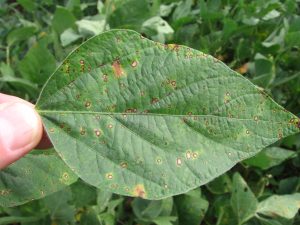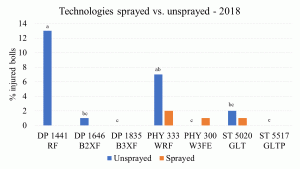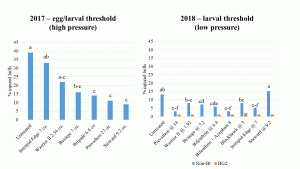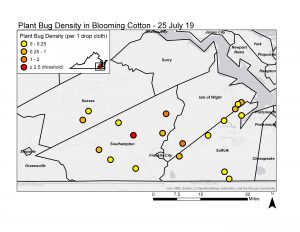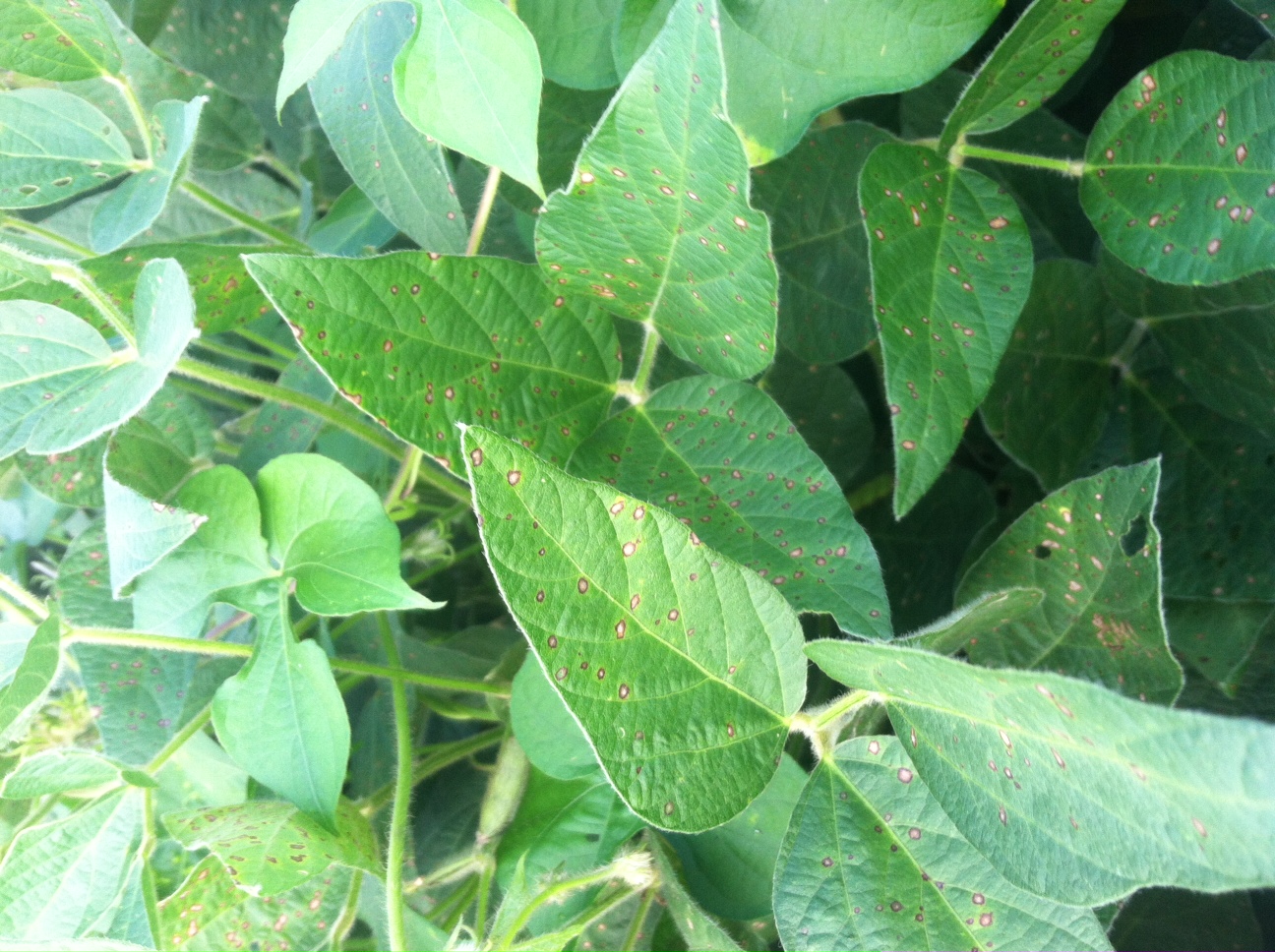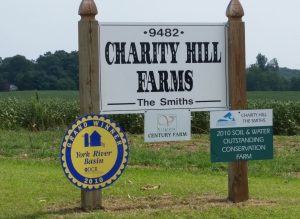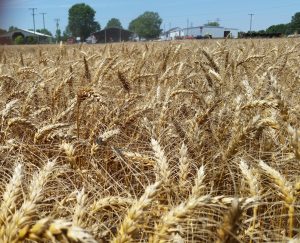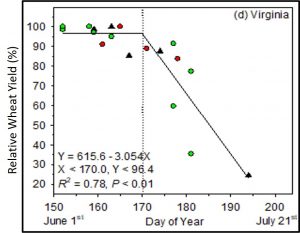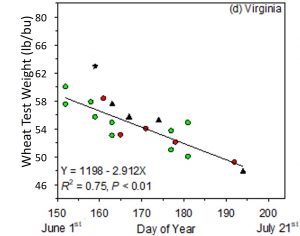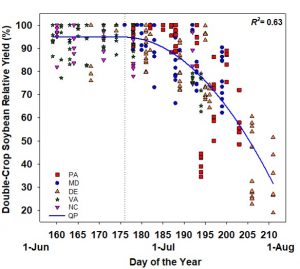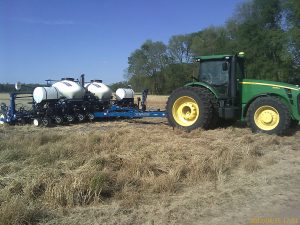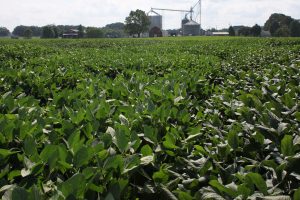In general, high seed costs have resulted in a reduction in the number of soybean seed planted per acre. For our full-season production system, most have reduced their seeding rate to 140,000 or less. Some have even had success with rates as low as 80 to 100 thousand seed/acre. My research over the years has shown that we only need, on average, about 70 to 80 thousand plants/acre to maximize our yield. But is this too low? Yes, it could be – in some situations.
There is also interest in varying seeding rates. I said many years ago that it appears that this is possible. But our approach to variable-rate soybean seeding will be just the opposite of how we vary our rates with corn. With corn, we increase seeding rate as our yield potential increases. With soybean, we do just the opposite – we reduce our seeding rate as yield potential rises. But, how much can we reduce seeding rate with rising yield potential?
To answer both questions – Is a final stand of 70 to 80 thousand plants too low? and How do I vary soybean seeding rates?, I analyzed over 10 years (over 25 experiments from 2003-2011) of on-farm and small-plot research to determine the optimal seeding rate for three different yield potentials. The results along with my recommendations are shown below.
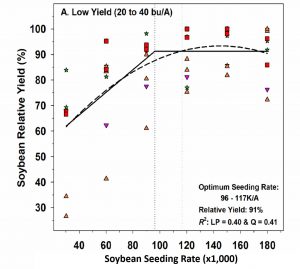 For low yields of 20-40 bushels/acre:
For low yields of 20-40 bushels/acre:
Plant 120 – 140 thousand seed /acre.
Why not less? The data to the left indicates that the optimal seeding rate (area between the two vertical dotted lines) ranges between around 100 to 120 thousand seed/acre. Why is this not my seeding rate. There is too much variability in the data; therefore too much risk. In some years, yields could have been reduced with this rate. So, I’m hedging towards less risk at these yield potentials.
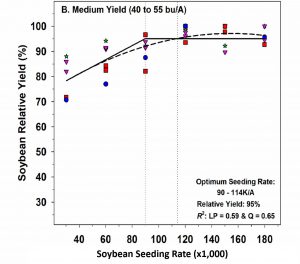 For medium yields of 40 to 55 bushels/acre:
For medium yields of 40 to 55 bushels/acre:
Plant 100 – 120 thousand seed/acre.
You will notice that the optimal seeding rate has declined to around 90 to 110 thousand seed/acre. Note that this is only about 10,000 seed less that the previous graph, but I lowered my recommendation by 20,000 seed. Why? There is little variability in these data; hence, I have more confidence.
 For high yields of 55 to 70 bushels/acre:
For high yields of 55 to 70 bushels/acre:
Plant 90 to 110 thousand seed/acre.
Like low yield potentials, I’m starting to hedge a little here towards less risk although my data indicates that I can go lower. There were cases where is took nearly 120,000 seed to get the maximum yields.
One comment that I get with these data is: “These data are old. Does it still hold up with newer varieties?” A good question! So, I’ve conducted seeding rate experiments over the past 2 years and I’ll continue this coming year. To summarize, the most recent data has not changed my recommendations – I think that these trends still hold true. However, we did see some differences last year – a year of wet and cloudy conditions. The data are below:
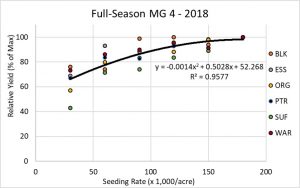
With our maturity group 4 trials, we saw yield continue to rise with seeding rate, and our yields were in the high range (about 50 to 60 bushels/acre). But yields with the group 5 soybeans tended to level off at about 120 thousand seed/acre. Why a different response and why did maturity group matter?
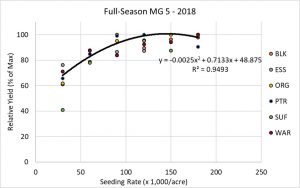 I think the answer is lack of sunlight. Total photosynthetically-active radiation interception differences are one of the reasons that we get yield responses to seeding rate. In most cases, this is a lack of leaf area; we are not intercepting all the light. But, this was not the case in 2019. We had what I normally consider enough leaf area, at least enough for a sunny year. But we had less light in 2019. The group 5 soybean did have more leaf area than the group 4 soybean; I’m assuming that these few extra leaves made up a little for the lack of light. Cloudiness is one of the risks we take. Still, I won’t change my recommendations based on last year since it was rather unusual.
I think the answer is lack of sunlight. Total photosynthetically-active radiation interception differences are one of the reasons that we get yield responses to seeding rate. In most cases, this is a lack of leaf area; we are not intercepting all the light. But, this was not the case in 2019. We had what I normally consider enough leaf area, at least enough for a sunny year. But we had less light in 2019. The group 5 soybean did have more leaf area than the group 4 soybean; I’m assuming that these few extra leaves made up a little for the lack of light. Cloudiness is one of the risks we take. Still, I won’t change my recommendations based on last year since it was rather unusual.
In conclusion, if you want to chose the best full-season seeding rate in Virginia for your yield potential, my recommendations are:
Low yields: 120 to 140 thousand seed/acre
Medium yields: 100 to 120 thousand seed/acre
High yields: 90 to 110 thousand seed/acre

